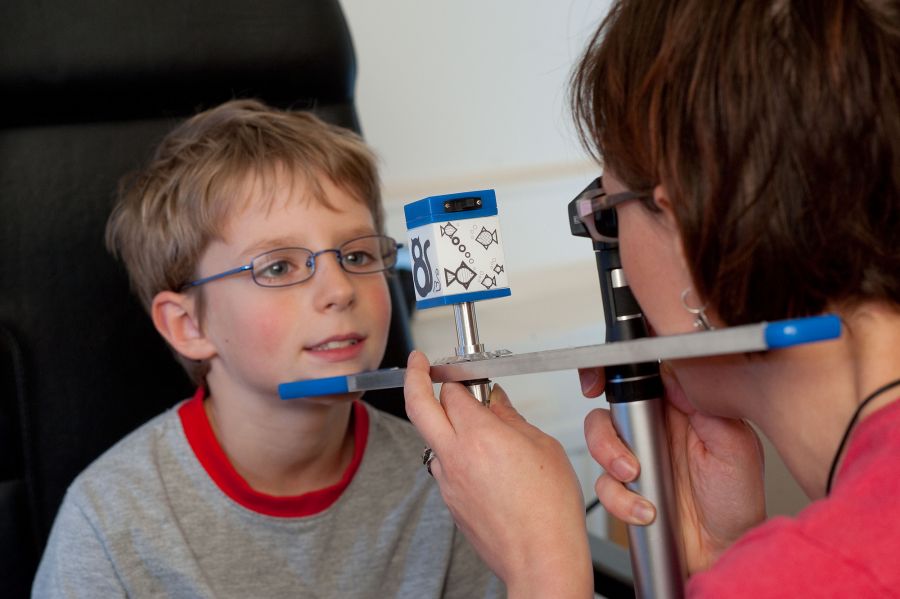Page content
The commercialisation of the UC-CUBE, as a joint project between Ulster University and Cardiff University grew out of our own clinical and research work and our engagement with other clinicians. We recognised a clinical need for a simple, evidence-based tool which clinicians could use to objectively assess and quantify the focusing ability of children.
While typically developing children usually have excellent accommodation and can focus accurately at different distances without difficulty, many children with developmental disability don’t have this facility (see our research). If this deficit goes undetected and unmanaged, these children will have impaired vision when viewing objects close to them and potentially objects in the distance as well.
Our research, and that of others, has shown that focusing deficits are common in this group of patients. Research involving children with Down syndrome, in which condition poor accommodation is very common, has shown that when deficits in focus are identified and managed, children’s visual and educational status benefits.1-3
In our engagement with clinicians we urged our colleagues to include assessment of accommodative accuracy into every visual assessment conducted with patients with developmental disability.
However, traditional methods used to measure focusing ability in clinical settings require the patient to tell the clinician how blurry or clear an object is. This type of questioning and measurement is not appropriate for children who have challenges with understanding or communication. Furthermore, such methods have been shown to significantly over-estimate focusing ability.4
In order to identify and manage focusing deficits and provide better eye care for their patients, clinicians needed a more appropriate objective method to assess accommodative function and a means by which to determine whether the results they achieved were ‘normal’ or ‘deficient’. This clinical need drove the development and commercialisation of the UC-CUBE and the application of research-derived normative data to the tool to support detection, quantification and management of focusing deficits in eye care practice.
Since being brought to market and prioritising access through a not-for-profit agenda, the UC-CUBE has sold to hospital clinics, teaching facilities, community eye care practices and researchers across the world, including Ireland, Australia, South Africa, Antigua, Sweden, India, Canada and the United States.
- de Weger, Boonstra and Goossens (2009) Effects of bifocals on visual acuity in children with Down syndrome: a randomized controlled trial. Acta Ophthalmologica.
- Al-Bagdady, Stewart et al (2009) Bifocals and Down's syndrome: Correction or treatment? Ophthalmic and Physiological Optics
- Adyanthay et al (2014) Children with Down syndrome benefit from bifocals as evidenced by increased compliance with spectacle wear. Journal of American Association for Pediatric Ophthalmology and Strabismus.
- Anderson and Stuebing (2014) Subjective versus objective accommodative amplitude: preschool to presbyopia. Optometry and Vision Science

















